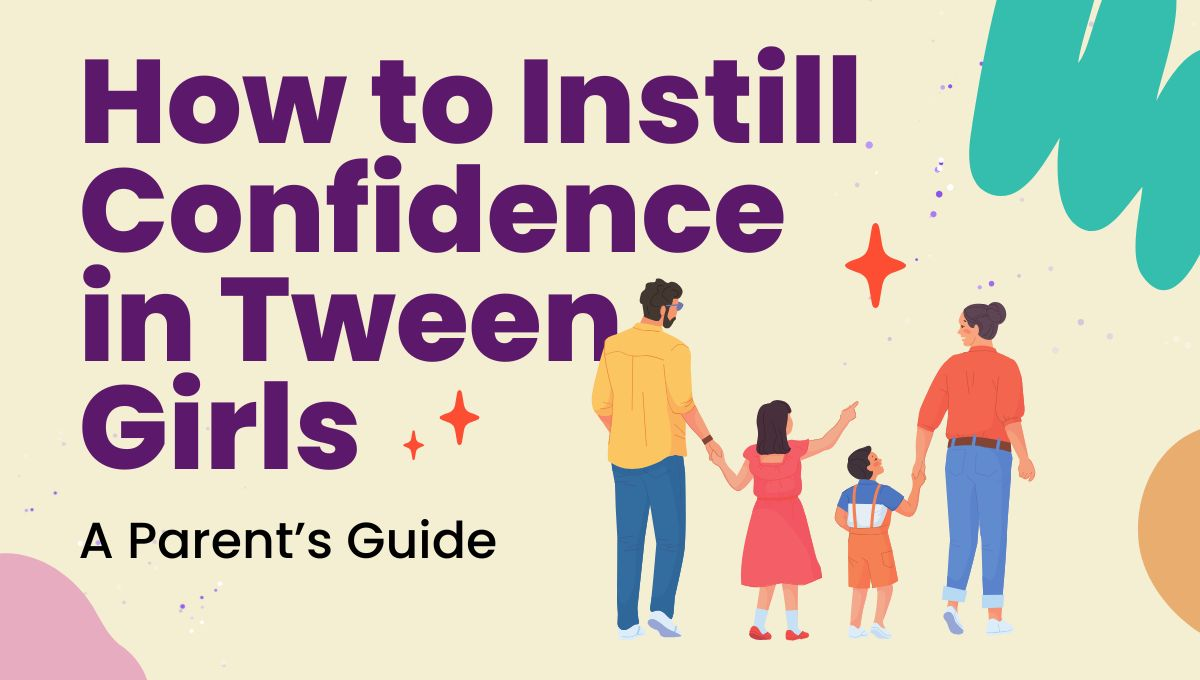Confidence is not something that appears overnight—it’s built steadily, early, and consistently through the small moments of everyday life. As parents, we’re all learning as we go, and every child’s personality, family dynamic, and stage of growth is unique. What works at one age—or even one week—might shift the next. But one truth remains constant: positivity and confidence are nurtured through open communication, attentive presence, and the encouragement we provide in those pivotal moments.
Research shows that girls’ confidence drops by as much as 30% between the ages of 8 and 14 (Katty Kay & Claire Shipman, The Confidence Code for Girls). That statistic is a reminder of how important it is for us to start early and keep building. Confidence isn’t just about cheering on accomplishments—it’s about fostering resilience, encouraging healthy risks, and teaching our daughters that self-worth comes from who they are, not just what they achieve.
At BOTI Box, our purpose is to help parents and caregivers create these moments of encouragement and empowerment. By focusing on the small, daily lessons in self-belief, we can give every girl the foundation she needs to grow into a confident young woman.
Drawing from leading experts here are practical ways parents and caregivers can nurture confidence in tween girls.
1. Encourage Healthy Risk-Taking
Confidence is built by action—not perfection. According to Kay and Shipman, when girls step outside of their comfort zones, try something new, and learn to rebound from setbacks, their confidence grows. Allow your daughter to try hard things and reassure her that mistakes are a natural part of learning.
Tip: Praise her effort and resilience, not just her achievements. This teaches her that growth matters more than getting it “right” the first time.
2. Model Self-Acceptance
Kids notice how we talk about ourselves. Clinical psychologist Dr. Catherine Steiner-Adair warns against negative self-talk such as, “I was bad today, I had pizza.” Our daughters internalize these messages. Instead, model body acceptance and a healthy relationship with food, work, and self-image.
Tip: Let her see you laugh at your own mistakes and recover. When parents share their struggles openly, girls learn that failure is not fatal—it’s part of growth.
3. Reframe Perfectionism
Social media and cultural pressures often push girls toward perfectionism. The result? More anxiety, less willingness to take risks. Experts note that 45% of 13-year-olds report they don’t feel allowed to fail (Kay & Shipman, 2018). By reframing failure as a step toward mastery, you help her develop resilience and courage.
Tip: Challenge negative self-talk together. Encourage her to replace thoughts like “I’m not good enough” with affirmations such as “I am learning and improving every day.”
4. Build Media Literacy
Social media is powerful—for better and worse. Help your daughter develop a critical eye when consuming media. Talk about airbrushed images, unrealistic standards, and the importance of following positive role models online. Research shows that when girls follow high-achieving women who share their interests, their worldview broadens and confidence rises (A Mighty Girl Interview).
Tip: Encourage her to follow four inspiring women on social media who align with her passions.
5. Create Opportunities for Voice and Choice
Author and educator Anea Bogue stresses the importance of giving girls opportunities to use their voices and make decisions. Even small choices, when respected, teach girls that their opinions matter.
Tip: Ask her, “What do you want?” and then honor her response. Encourage her to join team activities, where research shows girls build stronger self-esteem by learning collaboration and valuing themselves beyond external validation (Women’s Sports Foundation).
6. Celebrate Authenticity Over Appearance
Between the tween and teen years, girls’ belief that others like them drops nearly 46% (Kay & Shipman, 2018). With so much pressure to “fit in,” parents can balance the scales by celebrating authenticity over appearance.
Tip: For every compliment about looks, offer two about character, effort, or creativity.
7. Encourage Self-Care and Joy
Confidence flourishes when girls care for their minds and bodies. Encourage sleep, healthy eating, exercise, and creative outlets such as art, journaling, or sports. These practices build a foundation of well-being that supports resilience and confidence.
Final Thought
Confidence isn’t about being perfect—it’s about being brave enough to try, to fail, and to try again. As Kay and Shipman remind us, “They can’t be truly confident until they are truly themselves.” By giving our daughters space to take risks, room to speak their truth, and unconditional love no matter the outcome, we help them carry self-confidence into every stage of life.
At BOTI Box, that’s what drives us: creating moments of joy, inspiration, and empowerment that help every girl build her confidence from the inside out.
Citations for further reading:
- Kay, Katty, and Shipman, Claire. The Confidence Code for Girls. HarperCollins, 2018.
- Steiner-Adair, Catherine. Full of Ourselves: A Wellness Program to Advance Girl Power, Health, and Leadership. Teachers College Press, 2005.
- Bogue, Anea. 9 Ways We Are Screwing Up Our Girls and How We Can Stop. Seal Press, 2011.
- Women’s Sports Foundation – Research on Girls and Team Sports.
- A Mighty Girl Interview with Kay, Shipman, and Riley.
FAQ: How to Build Confidence in Tween Girls
What’s the best age to start building confidence?
Start early and reinforce often. Confidence grows from repeated experiences of trying, learning, and being supported—throughout childhood and especially between ages 8–14.
How do I respond when my child is afraid to try?
Validate the feeling, shrink the challenge into smaller steps, and praise effort. Use growth language: “Let’s test a tiny version and see what we learn.”
How can I reduce perfectionism?
Model “good enough” where appropriate, highlight progress over results, and treat mistakes as data. Offer two character/effort compliments for every appearance compliment.
What role does social media play?
It can connect and inspire, but also amplify comparison. Teach media literacy, set healthy breaks, and curate feeds with positive role models who share your child’s interests.


